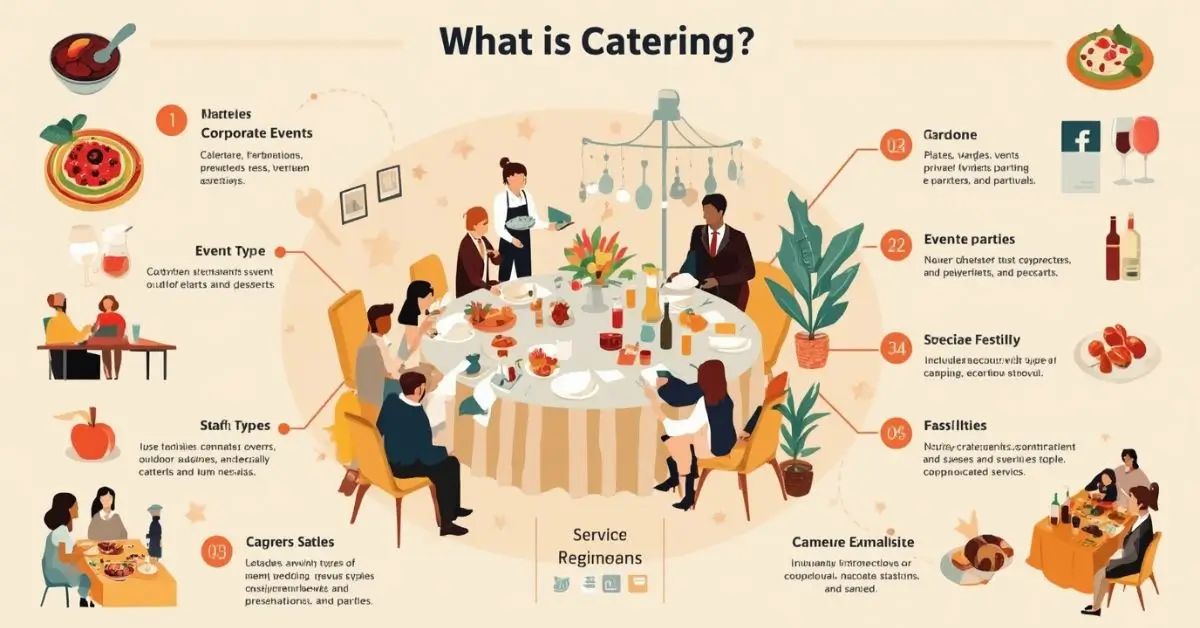BUSINESS
How to Check Your Nike Gift Card Balance Instantly

How to Check Your Nike Gift Keeping tabs on your gift card balance helps you avoid declined transactions at checkout. Whether you’re shopping for the latest trainers, workout gear, or lifestyle apparel, knowing your remaining funds lets you budget effectively. Plus, understanding how much is left can inspire timely purchases—like stocking up on running essentials or grabbing seasonal favorites before they sell out.
Online Balance Check: A Quick and Secure Option How to Check Your Nike Gift
The most convenient way to check a Nike gift card balance is through the official Nike website. Begin by navigating to the Nike Gift Card Balance page. Here, you’ll be prompted to enter the 16-digit gift card number along with the four-digit PIN—usually hidden by a scratch-off panel on physical cards. Once both are entered, click “Check Balance” to get instant results.
This method is popular among savvy shoppers since checking balances online requires only a few clicks. Nike’s secure portal ensures your card information remains safe during the process. You’ll immediately get notified whether your balance covers the items in your cart—before you even click “Place Order.”

In-Store Balance Verification: Speak With a Nike Team Member
Prefer hands-on support? Visit any Nike retail store and ask a team member to scan your gift card. They’ll tap it on the register or scan it and share your current amount. This method is great if you encounter issues with the online portal or if your card has been physically damaged.
Visiting a store also offers the perk of instant access to inventory. You can assess styles, sizing, and any exclusive seasonal gear before deciding how to use your remaining balance. Just remember to retain your original gift receipt or card for verification.
Nike App Balance Check: Tap and View
If you’re on the go, the Nike app (available for iOS and Android) offers a mobile-friendly way to check your gift card balance. After opening the app, navigate to “Wallet,” “Gift Cards,” or “Payment Methods.” Tap “Add Gift Card” to input your full card number and PIN. Once added, you’ll see the current balance as soon as the app processes the data.
This option is a favorite among frequent Nike shoppers due to its convenience. You can check your remaining funds before a workout store visit or while browsing running shoes during your commute. And since the app is connected to your Nike account, it remembers your balance for future reference.
Troubleshooting Common Balance Check Issues
Sometimes things don’t go as smoothly—here’s how to handle common problems:
- Invalid card number or PIN: Double-check that there are no extra spaces or misread digits. The PIN is often under a scratch-off sticker—ensure it’s fully peeled off.
- Error message or site unavailable: Try refreshing the page, switching browsers, or using an alternate device. If the problem persists, Nike Customer Service can manually verify your balance.
- Damaged card: If the barcode or chip is scratched, store staff can override the scan request and provide the balance after manually entering the card number.
- App not updating: Make sure you have the latest version installed. Logging out and back in can refresh the Wallet page and show the current balance.
How to Use Leftover Funds Smartly
Even if the balance doesn’t cover your full purchase, you can still spend it effectively—here’s how:
- Combine payment methods: Nike’s checkout allows you to split payments. Use your gift card first, then pay the remaining balance via credit card, debit card, or Apple Pay.
- Save small balances: Don’t let a few dollars go to waste. Nike accepts negative balance payments smoothly, making it easy to top up with another card.
- Check for promotions: Nike often runs discounts and promo codes. Pairing your gift card with a sale can stretch your funds further.
- Use within expiration limits: While most Nike gift cards don’t expire, they advise checking terms and conditions to avoid unexpected restrictions.
Creative Ideas for Spending a Nike Gift Card
Your gift card opens the door to a world of athletic and lifestyle gear. Here are a few ideas:
- Training essentials: Look for compression leggings, dri-fit tops, or supportive sports bras.
- Limited-edition launches: Nike releases exclusive sneakers frequently. Snap these up before they’re gone.
- Seasonal refresh: As seasons change, Nike rotates its collection—think lightweight gear for summer, insulated layers for winter.
- Accessories: Even basic items—like caps, socks, backpacks, and water bottles—can complement your active lifestyle and use up your balance.
FAQs
Q1: Can I check my balance without the PIN?
Unfortunately, no. Nike requires both the 16-digit card number and PIN to verify ownership and check the balance securely.
Q2: Why is my Nike gift card not showing up in the app?
Make sure your app is updated and logged into the same account used to originally check the card. Logging out and re-adding the card usually solves sync issues.
Q3: Does the leftover balance expire?
Nike gift cards typically do not expire. However, always check the terms and conditions to confirm—particularly in your country or region.
Q4: What if my online balance is incorrect?
If you spot a discrepancy, reach out to Nike Customer Service with your card details and recent transaction history. They can verify and update the balance.
Q5: Can I transfer my balance to another Nike account?
Gift card balances aren’t transferable between accounts. However, you can use the card to purchase store credit, which is linked to your Nike account.
Conclusion
Knowing how to check your Nike gift card balance instantly gives you control over your shopping experience—whether you’re browsing online, visiting a store, or using the mobile app. Keeping track of your remaining funds helps you avoid declined transactions, plan purchases carefully, and take advantage of promotions. By verifying balances, troubleshooting hiccups, and spending cautiously, you ensure a smooth and satisfying experience every time. Enjoy your Nike gear, and happy shopping.
BUSINESS
Top Insights from FintechZoom.com Bitcoin Reports

FintechZoom.com Bitcoin refers to the coverage and tools available on FintechZoom that focus specifically on Bitcoin. The platform delivers a combination of real-time price updates, detailed trading insights, and market trends analysis. Unlike generic financial news sites, FintechZoom zeroes in on cryptocurrency, offering a specialized lens that investors can trust.
By using this resource, you can track Bitcoin price fluctuations, understand market movements, and even anticipate upcoming trends. For example, one user tweeted recently: “I rely on FintechZoom for Bitcoin price updates daily—saved me from some bad trades!”
FintechZoom.com Bitcoin News: Your Daily Market Digest
Keeping up with the crypto world is challenging. FintechZoom crypto news curates headlines and articles relevant to Bitcoin, including regulatory developments, market sentiment shifts, and technological innovations.
Short, readable news pieces allow you to digest key information without getting overwhelmed. They cover stories like Bitcoin adoption in emerging markets, policy changes affecting cryptocurrency, and even high-profile investor moves. This is crucial for making informed decisions in a market where volatility is the norm.
Bitcoin Price Updates: Real-Time Insights
Bitcoin price updates on FintechZoom are designed to provide minute-to-minute tracking. Unlike delayed charts on generic finance sites, FintechZoom ensures that traders have the latest information on price swings, market cap, and trading volume.
Real-time updates help users:
- Identify optimal entry and exit points for trades
- Monitor sudden spikes or drops in Bitcoin value
- Compare trends with historical data for better prediction
For instance, during a sudden market dip in 2025, many traders credited FintechZoom’s instant alerts for helping them avoid significant losses.
Bitcoin Trading Insights: Smart Strategies
For those actively trading, Bitcoin trading insights offer strategies and patterns recognized by market analysts. FintechZoom breaks down technical indicators, trends, and market psychology in a way that’s accessible for both novice and experienced traders.
You’ll find analyses on support and resistance levels, momentum indicators, and how global events influence Bitcoin’s short-term price movements. These insights help traders make smarter, data-driven decisions rather than relying on speculation.
FintechZoom Bitcoin Analysis: Deep Dives
Beyond news and price updates, FintechZoom Bitcoin analysis provides in-depth reports on Bitcoin’s performance, comparing it with other cryptocurrencies and evaluating potential future scenarios. Analysts explore:
- Historical performance trends
- Market capitalization changes
- Institutional investment impacts
- Potential regulation effects
This level of detail makes it easier for investors to forecast risks and rewards, aligning their strategies with market realities rather than assumptions.
Cryptocurrency Market Trends: 2025 Insights
The crypto market evolves rapidly, and staying updated on cryptocurrency market trends is essential. FintechZoom.com Bitcoin tracks:
- Bitcoin dominance in the crypto ecosystem
- Altcoin correlations and effects on Bitcoin
- Emerging technologies like Layer 2 solutions and decentralized finance (DeFi)
- Market sentiment analysis based on trading volumes and social metrics
Understanding trends helps you predict market momentum, plan long-term investments, and stay ahead of shifts before they become mainstream.
Bitcoin Investment Guide: Beginner to Advanced
For newcomers, the Bitcoin investment guide on FintechZoom offers step-by-step tutorials:
- How to buy Bitcoin safely
- Understanding wallets and private keys
- Assessing market risks and volatility
- Long-term vs short-term investment strategies
Advanced traders can also access insights on derivatives, margin trading, and portfolio diversification strategies.
Bitcoin Market Predictions: Expert Forecasts
Bitcoin market predictions are essential for anyone planning future investments. FintechZoom aggregates expert opinions, algorithmic forecasts, and scenario-based analysis to give a rounded view.
For example, in early 2025, FintechZoom predicted a potential surge in Bitcoin prices due to institutional adoption, which closely aligned with actual market movements later that year. Using these predictions responsibly allows investors to strategize and minimize risk exposure.
Blockchain News FintechZoom: Beyond Bitcoin
While Bitcoin remains the focus, blockchain news FintechZoom covers the broader ecosystem. This includes innovations in decentralized applications, smart contracts, and blockchain scalability solutions.
Readers can see how technological developments might affect Bitcoin’s future value or introduce new investment opportunities. For instance, a breakthrough in blockchain speed could increase transaction efficiency, indirectly boosting Bitcoin adoption.
Bitcoin Price Chart Today: Track Your Moves
Bitcoin price chart today features interactive charts that help users visualize trends. Traders can:
- Compare current price against historical data
- Analyze volume and market cap trends
- Identify key support and resistance zones
This visualization helps both novice and expert traders make quicker, informed decisions.
Cryptocurrency Updates 2025: Stay Ahead
Cryptocurrency updates 2025 ensure readers are aware of regulatory changes, market anomalies, and major industry announcements. This includes updates on:
- Bitcoin ETF approvals
- Tax regulations affecting crypto investments
- Major exchange launches or hacks
- Technological advancements impacting blockchain security
Staying updated allows investors to act proactively, protecting investments and capitalizing on new opportunities.
Real-Life Example: A Trader’s Success
One crypto enthusiast shared: “Using FintechZoom’s Bitcoin trading insights, I managed to increase my portfolio by 25% in just three months. The real-time updates and expert analysis were a game-changer.”
This example highlights how actionable insights can make a tangible difference in cryptocurrency trading outcomes.
FAQ’s
How reliable is FintechZoom.com for Bitcoin analysis?
FintechZoom offers expert-driven insights, real-time updates, and detailed reports, making it a reliable resource for Bitcoin investors.
What features does FintechZoom provide for Bitcoin traders?
The platform offers price charts, trading insights, market trend analysis, expert forecasts, and blockchain news.
Can beginners use FintechZoom.com Bitcoin investment guidance?
Yes, FintechZoom provides step-by-step tutorials, wallet guides, and investment strategies suitable for beginners and intermediate users.
How often are Bitcoin prices updated on FintechZoom?
Bitcoin prices are updated in real-time, ensuring traders have the most accurate data for informed decisions.
Conclusion
FintechZoom.com Bitcoin is more than just a news portal; it’s a comprehensive platform for traders and investors in 2025. From real-time price updates to expert trading insights and long-term market predictions, it equips users with the knowledge to navigate the volatile cryptocurrency landscape confidently.
BUSINESS
What Is Catering: Tips for Event Planners

Whether you’re planning a wedding, corporate event, or private party, understanding what is catering is essential. Catering ensures your guests enjoy delicious food, seamless service, and memorable experiences. This guide helps event planners, small business owners, hospitality students, home entertainers, and corporate clients navigate the world of catering with confidence.
Understanding What Catering Is
Catering is the business or service of providing food and beverages for events or gatherings. It ranges from small home parties to large-scale weddings, corporate conferences, and outdoor festivals. Catering professionals manage menu planning, food preparation, presentation, and service, allowing hosts to focus on their guests and the event experience.
Key Features of Catering Services
- Personalized menus for different event types
- Professional staff for food preparation and service
- Equipment and setup management
- Compliance with food safety and hygiene standards
Expert Insight: According to the National Association for Catering & Events (NACE), a professional catering service combines culinary expertise, planning, and logistics to elevate any event experience (NACE.com).
Types of Catering Services
Catering can vary based on the event, audience, and budget. Understanding the options ensures the right choice for your needs.
| Type of Catering | Description |
|---|---|
| Event Catering | Large-scale events such as weddings, festivals, and private parties. |
| Corporate Catering | Office lunches, conferences, and client meetings. |
| Wedding Catering | Customized menus, multi-course meals, and premium service for weddings. |
| Home Catering | Small gatherings, birthday parties, and intimate celebrations. |
| Specialized Catering | Dietary-focused services, vegan, gluten-free, or themed events. |
Expert Reference: The Caterer UK emphasizes the importance of selecting catering services that match your event type and guest preferences (thecaterer.com).
How Catering Works
When asking, “What is catering and how does it work?”, here’s the typical process:
- Consultation – Discuss event size, theme, and dietary requirements.
- Menu Planning – Create a tailored menu with appetizer, main, dessert, and beverage options.
- Preparation & Logistics – Ingredients are sourced, prepared, and transported to the venue.
- Service – Staff serve food, manage setup, and ensure smooth execution.
- Cleanup – The catering company handles waste management and cleanup.
Catering Industry Trends in 2025
The catering industry continues to evolve. Some notable trends include:
- Sustainable and eco-friendly catering practices
- Plant-based and alternative protein menus
- Interactive food stations and live cooking experiences
- Integration of technology for online menu planning and event coordination
Expert Tip: Food Service Solutions reports that clients increasingly value sustainability, dietary inclusivity, and unique culinary experiences in catering services (foodserviceconsulting.com).
Corporate Catering for Office Events
Corporate clients can leverage corporate catering for:
- Team lunches and retreats
- Board meetings and conferences
- Networking events and client appreciation days
Benefits include time-saving, professional presentation, and consistent food quality.
Event Planning and Catering Tips for Beginners
- Define your event type and audience
- Choose the catering service that aligns with your goals
- Consider affordable catering options for parties without compromising quality
- Sample menus in advance to ensure satisfaction
- Verify the catering company’s credentials and experience
Pro Tip: Startups or small businesses exploring catering should focus on niche offerings, such as themed menus or local specialties.
Catering Menu Ideas
- Small Events: Finger foods, canapé platters, mini desserts
- Weddings: Multi-course meals, signature cocktails, dessert stations
- Corporate: Buffet-style lunches, boxed meals, coffee breaks
- Home Gatherings: BBQs, tapas, potluck-style arrangements
FAQ’s
What is catering and how does it work?
Catering provides professional food services for events, including menu planning, preparation, service, and cleanup.
Types of catering services for weddings and events?
Includes event catering, wedding catering, corporate catering, home catering, and specialized dietary services.
How to start a catering business in 2025?
Research your market, create a business plan, obtain licenses, hire trained staff, and focus on unique menu offerings.
Difference between catering and food delivery?
Catering involves full service (preparation, setup, service), while food delivery simply provides food to the venue without staff.
What skills are required for a catering career?
Culinary expertise, organizational skills, customer service, time management, and food safety knowledge.
Professional catering companies near me?
Search locally using verified directories or professional associations like NACE for trusted providers.
Conclusion
Understanding what is catering is essential for event planners, corporate clients, home entertainers, and hospitality professionals. With the right catering service, your event can be seamless, delicious, and memorable, reflecting both quality and professionalism.
BUSINESS
Powerful Statement: A Lot Going On at the Moment Shirt – 5

a lot going on at the moment shirt didn’t just appear out of nowhere. It’s rooted in Taylor Swift’s playful, self-aware sense of humor. Back in 2013, Taylor was spotted wearing a plain white tee with the hand-written phrase “not a lot going on at the moment.” The photo quickly went viral, with fans and meme accounts sharing it everywhere.
Fast forward to the Taylor Swift Eras Tour, and the phrase made a comeback—this time with a twist. Fans started sporting shirts that read “a lot going on at the moment,” flipping the original message on its head. It became a symbol of the whirlwind energy of the Eras era, and a nod to how much Taylor (and her fans) really do have going on.
“I wore my ‘a lot going on at the moment’ shirt to the Eras show and got so many compliments. It’s like a secret handshake for Swifties!”
Not a Lot Going On at the Moment T Shirt vs. A Lot Going On at the Moment Shirt
The Evolution of a Meme
The not a lot going on at the moment t shirt started as a tongue-in-cheek way for Taylor to poke fun at her own public image. But as her career exploded, fans embraced the irony—because, let’s face it, there’s always something happening in the Swiftie universe.
The a lot going on at the moment shirt is the natural evolution. It’s bold, honest, and a little bit cheeky. Wearing it says, “Yes, I’m busy, and I’m loving every minute of it.”
Why Fans Love Both
Some fans prefer the original not a lot going on at the moment shirt for its subtlety and nostalgia. Others love the updated version for its energy and relevance to the current era. Either way, both shirts have become staples at concerts, meetups, and even casual Fridays at the office.
Taylor Swift Eras Shirt: The Ultimate Concert Essential
Why the “A Lot Going On at the Moment” Shirt Is a Swiftie Favorite
If you’re heading to a Taylor Swift concert, you know the outfit is half the fun. The taylor swift eras shirt—especially the “a lot going on at the moment” version—has become a go-to for fans who want to show their love in a clever, stylish way.
It’s not just about looking good. It’s about being part of a community. When you spot someone else in the crowd wearing the same shirt, there’s an instant connection. It’s a conversation starter, a photo op, and a badge of honor all in one.
How to Style Your Eras Shirt
- Pair with high-waisted jeans for a classic, casual look.
- Layer under a denim jacket for chilly nights at the stadium.
- Accessorize with friendship bracelets (a Swiftie must!).
- Go bold with a skirt or sequins if you want to stand out.
Not a Lot Going On at the Moment Shirt: Nostalgia and New Meanings
The Power of a Simple Statement
The not a lot going on at the moment shirt is more than just a meme. For many, it’s a reminder to embrace downtime, enjoy the little things, and not take life too seriously. In a world that’s always rushing, sometimes it’s nice to say, “Hey, I’m just chilling.”
From Meme to Movement
What started as a joke has become a movement. Fans have created their own versions, added custom touches, and even used the phrase as a mantra for self-care. It’s proof that sometimes, the simplest messages are the most powerful.
A Lot Going On at the Moment: Why It Resonates in 2025
Life Is Busier Than Ever
Let’s be real—a lot going on at the moment isn’t just a shirt, it’s a mood. In 2025, with work, school, social media, and endless events, everyone’s calendar is packed. The shirt captures that feeling perfectly. It’s relatable, a little bit funny, and totally on trend.

The Swiftie Effect
Taylor Swift’s influence can’t be overstated. When she wears or references something, it instantly becomes cool. The a lot going on at the moment shirt is no exception. It’s a way for fans to feel connected to her—and to each other.
Features and Quality: What to Look for in Your Shirt
Material Matters
Not all shirts are created equal. The best a lot going on at the moment shirt options are made from soft, breathable cotton or a cotton-blend. Look for shirts that hold up after multiple washes and don’t lose their shape.
Print Quality
A crisp, clear print is key. Whether you go for a hand-written style or a bold graphic, make sure the lettering won’t fade or crack. Some fans even DIY their own shirts for a personal touch.
Sizing and Fit
Most sellers offer unisex sizing, but check the size chart before you buy. If you like a relaxed fit, consider sizing up. For a more fitted look, stick to your usual size.
Where to Buy: Finding the Perfect “A Lot Going On at the Moment Shirt” in 2025
Official Merch vs. Fan-Made
You’ll find the a lot going on at the moment shirt on official Taylor Swift merch sites, but fan-made versions are everywhere—Etsy, Redbubble, and even local print shops. Each has its own vibe, so shop around to find one that matches your style.
Price Range
Expect to pay anywhere from $20 to $40, depending on the quality and where you buy. Limited edition or custom shirts may cost more, especially if they’re tied to a specific tour or event.
Shipping and Returns
Check shipping times, especially if you need your shirt for a concert. Most sellers offer easy returns, but always read the fine print.
Real-Life Example: The Shirt in Action
“I wore my ‘a lot going on at the moment’ shirt to a Taylor Swift listening party, and three people asked where I got it. It’s the perfect icebreaker!”
Fans love sharing their stories about wearing the shirt to concerts, parties, or just out and about. It’s a guaranteed way to connect with fellow Swifties and make new friends.
Pros and Cons: Is the “A Lot Going On at the Moment Shirt” Right for You?
Pros
- Instantly recognizable for Taylor Swift fans
- Versatile and easy to style
- Conversation starter at events and concerts
- Comfortable for all-day wear
- Available in many styles and colors
Cons
- May not appeal to non-fans
- Some versions can be pricey
- Popular designs may sell out quickly
- Quality varies by seller
Risks and Considerations in 2025
Watch Out for Counterfeits
With the shirt’s popularity, knockoffs are everywhere. Stick to reputable sellers and check reviews before buying.
Sizing Issues
Unisex sizing can be tricky. Always check the size chart and read customer feedback for fit tips.
Environmental Impact
If sustainability matters to you, look for shirts made from organic cotton or recycled materials. Some fan shops now offer eco-friendly options.
How to Care for Your “A Lot Going On at the Moment Shirt”
- Wash inside out to protect the print.
- Use cold water and gentle detergent.
- Hang dry or tumble dry on low to prevent shrinking.
- Avoid ironing directly on the print.
Taking care of your shirt ensures it stays looking fresh, even after dozens of wears.
FAQs
1. What does the “a lot going on at the moment shirt” mean?
The phrase started as a playful twist on Taylor Swift’s original “not a lot going on at the moment” shirt. It’s now a way for fans to express how busy and exciting life can be—especially during the Eras era.
The Bottom Line
The a lot going on at the moment shirt is more than just a piece of clothing—it’s a statement, a conversation starter, and a symbol of the Swiftie community. Whether you’re reliving the nostalgia of the not a lot going on at the moment t shirt or embracing the energy of the Eras era, this shirt is a fun, stylish way to show your love for Taylor Swift and connect with fellow fans.

 SCIENCE3 months ago
SCIENCE3 months agoThe Baby Alien Fan Bus Chronicles

 BUSINESS3 months ago
BUSINESS3 months agoMastering the Art of Navigating Business Challenges and Risks

 WORLD3 months ago
WORLD3 months agoRainwalkers: The Secret Life of Worms in the Wet

 WORLD3 months ago
WORLD3 months agoRainborne Royals: The Rise of Winged Termites

 WORLD3 months ago
WORLD3 months agoFox News Returns to Dish: Broadcast Battle Resolved

 EDUCATION3 months ago
EDUCATION3 months agoFresh Bites: Foodstuffs Update

 FOOD3 months ago
FOOD3 months agoDining with the Sandhill Crane: Nature’s Graceful Forager

 WORLD3 months ago
WORLD3 months agoTurning Point: Inside Today’s Youth Detention Developments
















